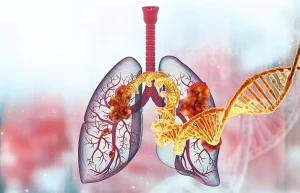U.S. death rates from cancer continued falling from 2001 to 2017 — dropping an average 1.5% a year, a new report shows.
The annual decline was slightly larger among men (1.8%) than women (1.4%), according to the Annual Report to the Nation on the Status of Cancer.
The report is prepared by the U.S. Centers for Disease Control and Prevention; the U.S. National Cancer Institute; the American Cancer Society, and the North American Association of Central Cancer Registries.
“The United States continues to make significant progress in cancer prevention, early detection, and treatment,” said CDC director Dr. Robert Redfield.
“While we are encouraged that overall cancer death rates have decreased, there is still much more we can do to prevent new cancers and support communities, families, and cancer survivors in this ongoing battle,” Redfield added in a CDC news release.
There were decreases in all major racial/ethnic groups and among men, women, young adults, teens and children.
Rates of new cancers leveled off among men and increased slightly among women from 2012 to 2016, according to the report.
The researchers also found that from 2013 to 2017:
- Among men, death rates fell for 11 of the 19 most common cancers. They remained stable for four cancers — including prostate — and increased for four cancers: mouth and pharynx; soft tissue including heart, brain and other nervous system, and pancreas.
- Among women, death rates decreased for 14 of the 20 most common cancers, including the three leaders — lung, breast and colon. However, death rates rose for cancers of the uterus, liver, brain and other nervous system, soft tissue including heart, and pancreas. Rates were stable for mouth and pharynx cancers.
- Overall cancer death rates among children up to 14 years fell an average of 1.4% a year. Rates among 15- to 39-year-olds decreased an average of 1% a year.
- Deaths from melanoma skin cancer fell more than 6% a year among men and women.
- Lung cancer death rates decreased 4.8% a year among men and 3.7% a year among women. However, lung cancer remains the leading cause of cancer death in the United States, accounting for about one-quarter of all cancer deaths.
“The drops in mortality we’re seeing are real, sustained, and a strong indication of what we can do when we work to prevent and treat cancer,” said Dr. William Cance, chief medical and scientific officer of the American Cancer Society.
“But we can and must do more, particularly to ensure everyone in the United States has access to the resources that are all too often benefiting only the most fortunate,” he said in the release.
The findings were published March 12 in the journal Cancer.
More information
The U.S. National Cancer Institute has more on cancer.
Source: HealthDay
Copyright © 2025 HealthDay. All rights reserved.

















